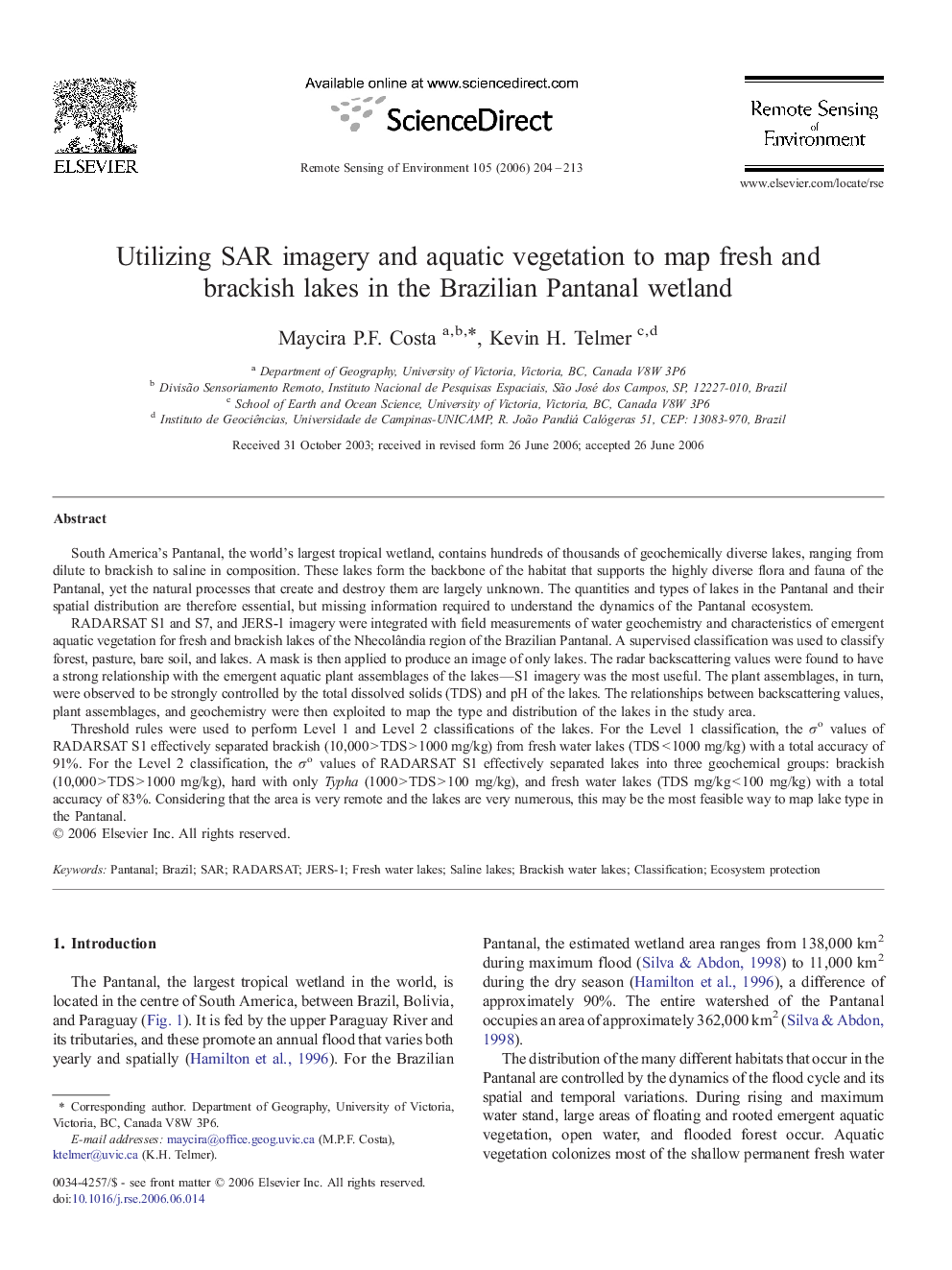| Article ID | Journal | Published Year | Pages | File Type |
|---|---|---|---|---|
| 4460936 | Remote Sensing of Environment | 2006 | 10 Pages |
South America's Pantanal, the world's largest tropical wetland, contains hundreds of thousands of geochemically diverse lakes, ranging from dilute to brackish to saline in composition. These lakes form the backbone of the habitat that supports the highly diverse flora and fauna of the Pantanal, yet the natural processes that create and destroy them are largely unknown. The quantities and types of lakes in the Pantanal and their spatial distribution are therefore essential, but missing information required to understand the dynamics of the Pantanal ecosystem.RADARSAT S1 and S7, and JERS-1 imagery were integrated with field measurements of water geochemistry and characteristics of emergent aquatic vegetation for fresh and brackish lakes of the Nhecolândia region of the Brazilian Pantanal. A supervised classification was used to classify forest, pasture, bare soil, and lakes. A mask is then applied to produce an image of only lakes. The radar backscattering values were found to have a strong relationship with the emergent aquatic plant assemblages of the lakes—S1 imagery was the most useful. The plant assemblages, in turn, were observed to be strongly controlled by the total dissolved solids (TDS) and pH of the lakes. The relationships between backscattering values, plant assemblages, and geochemistry were then exploited to map the type and distribution of the lakes in the study area.Threshold rules were used to perform Level 1 and Level 2 classifications of the lakes. For the Level 1 classification, the σo values of RADARSAT S1 effectively separated brackish (10,000 > TDS > 1000 mg/kg) from fresh water lakes (TDS < 1000 mg/kg) with a total accuracy of 91%. For the Level 2 classification, the σo values of RADARSAT S1 effectively separated lakes into three geochemical groups: brackish (10,000 > TDS > 1000 mg/kg), hard with only Typha (1000 > TDS > 100 mg/kg), and fresh water lakes (TDS mg/kg < 100 mg/kg) with a total accuracy of 83%. Considering that the area is very remote and the lakes are very numerous, this may be the most feasible way to map lake type in the Pantanal.
